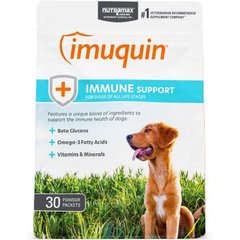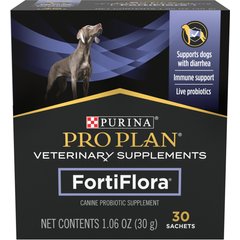7 Types of Steroids for Dogs
By Jennifer Coates, DVM
Steroids—they’re one of the most common types of medications given to dogs. But did you know that there are actually seven classes of steroid drugs, each of which works differently in the body and has its own set of potential side effects? Read on to learn exactly what you are giving your dog and what problems you should watch out for.
Glucocorticoids
Glucocorticoids are by far the most common type of steroid used in veterinary medicine. The list of glucocorticoid drugs is long and includes such familiar names as prednisone, prednisolone, triamcinolone, betamethasone, dexamethasone, flumethasone, fludrocortisone, hydrocortisone, and methylprednisolone. At relatively low doses, glucocorticoids reduce inflammation. At higher doses, they suppress the immune system. Glucocorticoids are commonly used to treat allergies and immune-mediated diseases but may also be prescribed if a dog has Addison’s disease (see the next section), to treat shock, or in the therapeutic protocol for some types of cancer.
Glucocorticoids can be given by injection, orally, topically, or by inhalation. The short term use of glucocorticoids is generally quite safe, but when they have to be given at especially high doses, over long periods of time, or cannot be tapered to at least every other day use, side effects such as the following become more likely:
- increased thirst, urination and hunger
- a susceptibility to infections
- gastrointestinal ulcers
- muscular weakness
- abnormal behaviors
- the development of Cushing’s disease
Serious side effects are much more likely if glucocorticoid medications have to be given systemically (by mouth or injection) rather than locally (e.g., inhaled, applied to the skin, or as eye drops).
Vet Recommended Health Support
- Nutramax Imuquin Immune Support Powder Immune Supplement for Dogs, 30 count$24.99Chewy Price
- Purina Pro Plan Veterinary Diets FortiFlora Powder Probiotic Digestive Supplement for Dogs, 30 count$30.99Chewy Price
- Purina Pro Plan Adult Sensitive Skin & Stomach Salmon & Rice Formula Dry Dog Food, 16-lb bag$54.48Chewy Price
- Virbac Epi-Otic Advanced Ear Cleaner for Dogs & Cats, 4-fl oz bottle$12.34Chewy Price
Mineralocorticoids
When dogs have Addison’s disease, their adrenal glands do not produce enough of two types of steroids—glucocorticoids (described above) and mineralocorticoids. Mineralocorticoids are responsible for maintaining the balance of water and electrolytes within the body while glucocorticoids play a role in the stress response. Replacing the missing mineralocorticoids and glucocorticoids is central to treating dogs with Addison’s disease.
Desoxycorticosterone is a long-acting, injectable mineralocorticoid while fludrocortisone can be given orally and has both mineralocorticoid and glucocorticoid activity. Both of these drugs are quite safe but can cause increased thirst and urination. More serious side effects are generally seen only when dogs are overdosed or abruptly stop receiving their medications.
Adrenal Cortical Steroids
Adrenocorticotropic hormone (also known as ACTH or corticotropin) and cosyntropin are used to diagnose dogs with Cushing’s disease and Addison’s disease. These drugs are given by injection as part of an ACTH stimulation test, which determines whether or not a dog’s adrenal glands are functioning normally. ACTH stimulation tests are also used to monitor dogs with Cushing’s disease who are being treated with the drug mitotane. Side effects are unlikely with adrenal cortical steroids since they are not given over the long term.
Anabolic Steroids
Anabolic steroids like stanozolol, boldenone, and nandrolone are not commonly used in veterinary medicine anymore but are still occasionally prescribed to stimulate the appetite, promote weight gain, increase strength, and treat anemia that is associated with long term illness. Anabolic steroids should never be given to animals who may become pregnant because they are known to cause serious birth defects. Other potential side effects include reproductive dysfunction in both males and females, electrolyte abnormalities, liver damage, and behavioral changes.
Estrogens
Estradiol is a naturally occurring estrogen. Diethylstilbestrol (DES) is the more commonly used synthetic version of estrogen. Both are steroid hormones that are most frequently used to treat urinary incontinence in female dogs when the safer medication phenylpropanolamine (PPA) does not produce satisfactory results. Estrogens may also be given to female dogs to encourage them to come into heat or to intact male dogs to treat benign prostatic hypertrophy (BPH). Estrogens can have many potentially serious side effects including bone marrow suppression that leads to blood disorders, a potentially fatal uterine infection (pyometra), feminization of male animals, and an increased likelihood of some types of cancer.
Progestins
Progestins are steroid hormones that are typically prescribed to postpone heat cycles or alleviate false pregnancies in female dogs and treat benign prostatic hypertrophy in male dogs. They may also be used for some types of skin problems or to modify aggressive behavior. Megestrol acetate and medroxyprogesterone are the most commonly used progestins in dogs. Potential side effects include increased thirst and appetite, behavioral changes, mammary gland enlargement, and an increased likelihood of developing diabetes mellitus, acromegaly (a hormonal disease that causes enlargement of the head), Cushing’s disease, uterine infection (pyometra), reproductive disorders, and some types of cancer.
Androgens
Danazol, mibolerone, and testosterone are all examples of androgens, a class of steroid hormones. Androgens have a variety of uses such as treating hormone-responsive urinary incontinence in male dogs, suppression of heat cycles and alleviation of false pregnancies in female dogs, and as part of the therapy for some types of immune-mediated blood disorders. Masculinization of female dogs, liver toxicity, and the promotion of some types of cancer are the most worrisome potential side effects.
The Pros and Cons of Steroids for Dogs
Steroids are very effective medications that have saved many lives. However, this drug class is also associated with a relatively high incidence of side effects. In many cases, problems can be prevented or managed by using the lowest dose possible for the shortest period of time and by closely monitoring dogs while they are on steroid medications. Talk to a veterinarian about the pros and cons of steroid treatment should it ever be recommended for your dog.
See Also
Image: Syda Productions via Shutterstock




